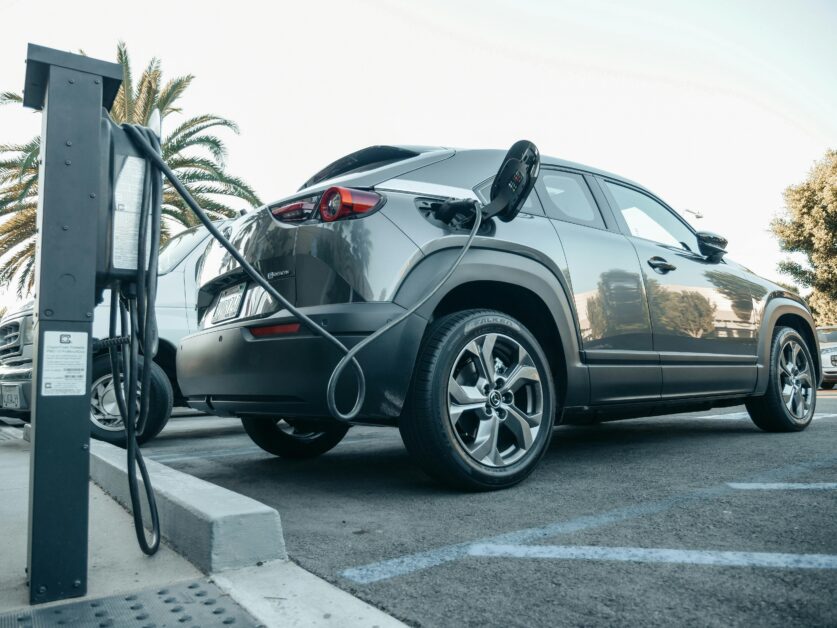The global automotive landscape is shifting, and an unexpected name is stepping into the spotlight: Foxconn. Known for assembling iPhones, the Taiwanese electronics giant is now steering toward electric vehicles (EVs). Foxconn plans 2 EVs for US markets—a midsize crossover and a stylish minivan—marking its bold entry into the auto industry. This move isn’t just about building cars; it’s about redefining how they’re made and who they’re made for. With a lineup of six light vehicles and two buses, Foxconn is positioning itself as a contract manufacturer ready to collaborate with global automakers. Here’s a closer look at what’s driving this transition and what it means for the future of EVs.

From Smartphones to Electric Vehicles
Foxconn, officially Hon Hai Precision Industry Co., has spent decades perfecting high-volume electronics manufacturing. Its factories churn out millions of iPhones, iPads, and other gadgets with precision and efficiency. Now, the company is applying that expertise to EVs, betting that cars are becoming more like “smartphones on wheels.” The logic is straightforward: EVs rely heavily on software, batteries, and electronics—areas where Foxconn already excels.
Leading this charge is Jun Seki, a former Nissan executive with deep automotive roots. Seki, who joined Foxconn in 2023 as chief strategy officer for EVs, brings credibility and insight to the table. His vision is clear: leverage Foxconn’s manufacturing prowess to build EVs for other brands, not to compete with them. This business-to-business model mirrors Foxconn’s approach in electronics, where it assembles products for Apple and others without selling directly to consumers.
Foxconn plans 2 EVs for US markets as part of a broader global strategy. The Model C, a midsize crossover, and the Model D, a crossover-styled minivan, are set to arrive in 2025 and 2027, respectively. These vehicles are just the start. Foxconn’s full lineup includes compact vans, sporty sedans, and even buses, all designed to meet diverse market needs. By focusing on contract manufacturing, Foxconn aims to be a behind-the-scenes partner, helping automakers navigate the complexities of EV production.
Foxconn Plans 2 EVs for US: Models C and D
The Model C is Foxconn’s flagship for the US. Already in production in Taiwan as the Luxgen N7 since December 2023, it’s a midsize crossover with solid specs. The rear-wheel-drive version packs a 172-kilowatt motor, while the all-wheel-drive model doubles that power, hitting 460 horsepower and sprinting from 0 to 62 mph in 3.8 seconds. Buyers can choose between a 58-kilowatt-hour battery (310-mile range) or an 83-kilowatt-hour pack (435 miles), based on the New European Driving Cycle. These figures may adjust under stricter EPA testing, but they signal a competitive offering.
Visually, the Model C stands out with sleek, wavy side panels and a sharp front fascia. It’s designed to appeal to American drivers who want style and performance without breaking the bank. Foxconn plans 2 EVs for US trials starting in Q4 2025, with the Model C leading the charge. Initial units will be built in Taiwan and shipped overseas, but Foxconn is eyeing local production to cut costs and dodge tariffs.
The Model D, slated for 2027, takes a different approach. This long-wheelbase minivan blends crossover proportions with a practical design. Its raked rear window and short hood give it a modern edge, while air suspension promises a smooth ride. Aimed at families and fleet buyers, the Model D could carve out a niche in the growing EV minivan market. Foxconn plans 2 EVs for US expansion, and the Model D’s versatility makes it a key piece of that puzzle.
A Global Lineup with Local Ambitions
Beyond the US, Foxconn’s EV ambitions span continents. The Model B, a compact sporty crossover, is headed to Australia in 2026, likely badged by Mitsubishi. In Taiwan, it launches later this year. The pint-sized Model A, pitched as an urban runabout or delivery vehicle, will hit Japan in 2027 and Southeast Asia soon after. For larger needs, Foxconn offers the Model T (a full-size bus) and Model U (a minibus), targeting public transit and commercial fleets.
Foxconn plans 2 EVs for US production eventually, but its global strategy hinges on flexibility. “It’s right to make them where they’re sold,” Seki said, acknowledging that local manufacturing makes sense only with sufficient demand. For now, Taiwan serves as the production hub, allowing Foxconn to scale efficiently. This transitional approach lets the company test markets while refining its processes.
The decision to prioritize local production in the US is strategic. With tariffs on imported vehicles rising—especially under recent trade policies—building domestically could keep prices competitive. Foxconn’s experience navigating global supply chains gives it an edge here. By planning 2 EVs for US assembly, the company is laying the groundwork for a sustainable foothold.
Partnering with Japanese Automakers
Foxconn’s EV push isn’t a solo act. The company is actively courting partnerships, particularly with Japanese automakers like Nissan, Honda, and Mitsubishi. Speculation about a tie-up has swirled for months, fueled by Seki’s Nissan pedigree and Foxconn’s tech expertise. In February, Chairman Young Liu expressed interest in collaborating with Nissan, though he ruled out an acquisition. Later reports suggested a bold four-way alliance involving Foxconn, Nissan, Honda, and Mitsubishi.
Seki has confirmed Foxconn is working with Mitsubishi but kept details sparse. He praised Japanese automakers for their quality focus, calling them “careful planners” who align with Foxconn’s fast-paced execution. This synergy could be a game-changer. Japanese brands bring established reputations and loyal customers; Foxconn offers cutting-edge electronics and cost-effective manufacturing.
Foxconn plans 2 EVs for US markets through partnerships, not as a standalone brand. By building vehicles for others, it avoids direct competition and leverages its strengths. Seki likens EVs to smartphones, where software and connectivity matter as much as hardware. Foxconn’s iPhone assembly experience—handling complex components at a massive scale—positions it to deliver on this promise.
Why Foxconn? The Case for a Tech Giant in EVs
At first glance, a tech company jumping into cars might seem odd. But EVs are reshaping the industry, levelling the playing field for newcomers. Traditional automakers face pressure to master software and electrification, areas where tech firms like Foxconn have an edge. Advanced infotainment, over-the-air updates, and battery management systems are now critical, and Foxconn’s electronics DNA gives it a head start.
Seki emphasizes Foxconn’s low-cost, high-quality production model. The company’s obsession with efficiency and confidentiality—honed through years of Apple contracts—translates well to EVs. Foxconn plans 2 EVs for US buyers, but its real goal is to be a trusted partner for automakers worldwide. By staying behind the scenes, it can scale without the risks of brand-building.
Critics might question whether Foxconn can handle the automotive world’s unique challenges, like safety regulations and consumer expectations. Yet its hiring of seasoned executives like Seki signals serious intent. With a proven track record in electronics, Foxconn is betting it can crack the EV code.
Challenges and Opportunities Ahead
Foxconn’s EV venture isn’t without hurdles. The auto industry is notoriously complex, with tight margins and fierce competition. Established players like Tesla and BYD dominate, while startups struggle to survive. Foxconn plans 2 EVs for US markets, but scaling production and securing partners will test its resolve. Tariffs, supply chain disruptions, and shifting consumer demand add further uncertainty.
Partnerships could be both a strength and a weakness. Aligning with Japanese automakers offers credibility, but negotiations can stall—as seen in the failed Nissan-Honda merger talks. Foxconn must prove it can deliver EVs that meet high standards while keeping costs low. Its contract manufacturing model reduces some risks, but it also limits brand recognition.
Still, the opportunities are vast. EVs are projected to dominate global sales by 2035, and contract manufacturers could play a bigger role as automakers outsource production. Foxconn plans 2 EVs for US expansion, tapping into the world’s second-largest auto market. If it can replicate its electronics success, Foxconn could become a linchpin in the EV supply chain.
What’s Next for Foxconn’s EV Journey?
Foxconn’s pivot to EVs is a bold bet on the future of mobility. By planning 2 EVs for US markets, it’s signaling confidence in its ability to compete. The Model C and Model D are just the beginning—test cases for a broader vision that spans continents and vehicle types. Whether it’s compact vans in Japan or buses in Europe, Foxconn wants to be the go-to builder for the EV era.
The company’s partnership strategy is key. By teaming up with brands like Mitsubishi and potentially Nissan or Honda, Foxconn can scale faster and smarter. Seki’s leadership, blending automotive know-how with tech-savvy, gives the effort credibility. Yet success will hinge on execution—delivering reliable, affordable EVs that meet market needs.
For now, Foxconn is playing the long game. It’s not trying to be Tesla or Toyota; it’s aiming to be the invisible force behind the next wave of electric vehicles. As it plans 2 EVs for US drivers, Foxconn is laying a foundation for something bigger. If it can navigate the road ahead, this tech giant could redefine what it means to build a car.
